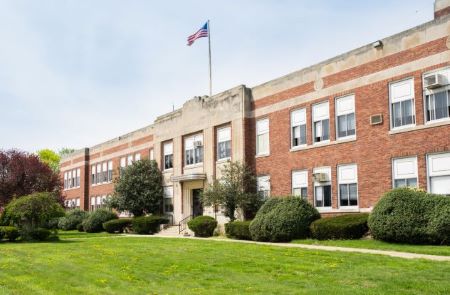The U.S. Department of Education (the “Department”) has issued updated guidance concerning constitutionally protected prayer and religious expression in public schools. Given recent developments in case law, it is important that school districts have an accurate understanding of the present state of the law and the scope of public schools’ authority to regulate the way in which students, teachers, coaches, and other school employees may engage in religious expression.
The updated guidance incorporates much of the material included in the guidance that the Department promulgated in 2003 and in 2020, and that President Clinton issued in 1995 addressing how constitutional principles apply in various educational contexts such as prayer during non-instructional time, accommodation of prayer during instructional time, prayer at graduation, moments of silence, the gathering of religious student groups for prayer, and the rights and responsibilities of teachers and other school employees. The state of the law has not changed materially in many of those contexts.
1. THE EXTENT TO WHICH PRAYER IN PUBLIC SCHOOLS IS LEGALLY PROTECTED
Prayer and Religious Exercise During Non-Instructional Time. Students may pray when they are not engaged in school activities or instruction, subject to the same rules designed to prevent material disruption of the educational program that are applied to other privately initiated expressive activities. Students also may read from religious materials; say a prayer or blessing before meals; and engage in worship or study religious materials with fellow students during non-instructional time (such as recess or the lunch hour) to the same extent that they may engage in nonreligious activities.
Student Organized Prayer Groups and Activities. Students may organize prayer groups and religious clubs to the same extent that students are permitted to organize other noncurricular student activity groups. Such groups shall have the same access to school facilities for assembly as other noncurricular groups, without discrimination based on the religious character or perspective of the groups. School authorities possess substantial discretion concerning whether to permit the use of school media for student advertising or announcements regarding noncurricular activities. However, where student groups that meet for nonreligious activities are permitted to advertise or announce their meetings, school authorities may not discriminate against groups that meet to engage in religious expression such as prayer. School authorities may choose to issue appropriate, neutral disclaimers of the school’s sponsorship or approval of noncurricular groups and events.
Staff Prayer or Other Religious Activity. School staff may not encourage or discourage private prayer or other religious activity. School employees are not prohibited from engaging in private prayer during the workday where they are not acting in their official capacities and where their prayer does not result in any coercion of students. School employees may also engage in private religious expression or brief personal religious observance during such times, subject to the same neutral rules the school applies to other private conduct by its employees. Schools may take reasonable measures to ensure that students are not pressured or encouraged to join in the private prayer of their teachers or coaches.
Moments of Silence. If a school has a “moment of silence” or other quiet periods during the school day, students are free to pray silently, or not to pray, during these periods of time.
Prayer and Religious Exercise During Instructional Time. Students may engage in prayer or religious expression during instructional time to the same degree they may engage in nonreligious private expression during such time. Students may, for example, bow their heads and pray to themselves before taking a test.
Student Assemblies and Noncurricular Events. Student speakers at school assemblies and noncurricular activities such as sporting events may not be selected on a basis that either favors or disfavors religious perspectives. Where a student speaker is selected on the basis of genuinely content-neutral, evenhanded criteria, and the school does not determine or have control over the content of the student’s speech, the expression is not reasonably attributed to the school and therefore may not be restricted because of its religious content (or content opposing religion) and may include prayer. In these circumstances, school officials may choose to make appropriate, neutral disclaimers to clarify that such speech (whether religious or nonreligious) is the speaker’s and not the school’s speech. By contrast, where school officials determine or have control over the content of what is expressed, such speech is attributable to the school and may not include prayer or content promoting (or opposing) religion.
2. CONSTITUTIONAL PRINCIPLES THAT RELATE TO RELIGIOUS EXPRESSION
Religious Literature. Public school students have a right to distribute religious literature to their schoolmates on the same terms as they are permitted to distribute other literature that is unrelated to school curricula or activities. Schools may apply the same reasonable time, place, or manner restrictions on distribution of religious literature as they do on non-school literature generally, but schools may not target religious literature for more permissive or more restrictive regulation.
Teaching about Religion. Public schools may not provide religious instruction, but they may teach about religion and promote religious liberty and respect for religious views (or lack thereof) of all. Philosophical questions concerning religion, the history of religion, comparative religion, religious texts as literature, and the role of religion in the history of the United States and other countries are all permissible public school subjects. Similarly, it is permissible to study religious influences on philosophy, art, music, literature, and social studies.
Student Dess Code and Policies. Public schools generally may adopt policies relating to student dress and school uniforms to the extent consistent with constitutional and statutory civil rights protections. Schools may not, however, target religious attire in general, or the attire of a certain religion, for prohibition or regulation. If a school makes exceptions to a dress code to accommodate nonreligious student needs, it ordinarily must also make comparable exceptions for religious needs. Students may display religious messages on items of clothing to the same extent and pursuant to the same conditions that they are permitted to display nonreligious messages.
Religious Expression in Class Assignments and Homework. Students may express their beliefs about religion in homework, artwork, and other written and oral assignments free from discrimination based on the religious perspective of their submissions. Such home and classroom work should be judged by ordinary academic standards of substance, relevance, and other legitimate pedagogical objectives.
Excusals for Religious Activities. Public schools have discretion to permit students to attend off-premises religious instruction, if schools do not encourage or discourage participation in such instruction or penalize students for attending or not attending. Similarly, schools may excuse students from class to remove a burden on their religious exercise, including prayer or fasting, at least where doing so would not impose material burdens on other students. Where school officials have a practice of excusing students from class based on requests for accommodation of nonreligious needs, religiously motivated requests for excusal may not be accorded less favorable treatment.
3. REQUIREMENTS UNDER OTHER FEDERAL AND STATE LAWS RELEVANT TO PRAYER AND RELIGIOUS EXPRESSION
The guidance highlights that public schools may also be subject to additional requirements relevant to prayer and religious expression. For example, the Equal Access Act, 20 U.S.C. § 4071, is designed to ensure that student religious activities are accorded the same access to Federally funded public secondary school facilities as are student secular activities. Under the Equal Access Act, a public secondary school receiving Federal funds that creates a “limited open forum” may not refuse student religious groups access to that forum. A “limited open forum” exists “whenever such school grants an offering to or opportunity for one or more non-curriculum related student groups to meet on school premises during non-instructional time.” 20 U.S.C. § 4071(b). Such meetings, as defined and protected by the Equal Access Act, may include a voluntary and student-initiated prayer service, scripture reading, or other worship exercise.
Under the Act, a public secondary school receiving Federal funds must also allow student religious groups to use school media—including the school’s newspaper, public address system, and bulletin board—to announce their meetings on the same terms as other non-curriculum-related student groups are allowed to use school media. Any policy concerning the use of school media must be applied to all noncurriculum-related student groups in a nondiscriminatory matter. Schools may, however, issue appropriate, neutral disclaimers of the school’s sponsorship or approval of noncurricular groups and events. Consistent with the First Amendment, the Equal Access Act also states that it should not be construed (among other things) to authorize a public school or its officials to influence the form or content of any prayer, require any person to participate in prayer, or abridge the constitutional rights of any person.
The guidance also reminds schools that as a condition of receiving funds from the Elementary and Secondary Education Act of 1965 they must annually certify in writing to its state educational agency by October 1 that it has no policy that prevents, or otherwise denies participation in, constitutionally protected prayer in public elementary and secondary schools. Please note that certifying compliance with Sections 2 and 3 is not a part of the required certification.
More information is available via the link below.
https://www2.ed.gov/policy/gen/guid/religionandschools/prayer_guidance.html
We hope you find this information helpful. Please contact Karen Pokorny at kpokorny@jaspanllp.com with any questions.


